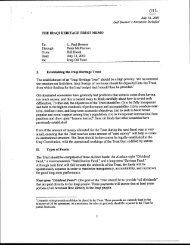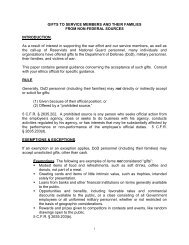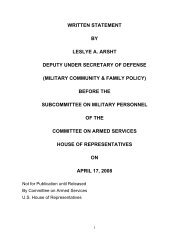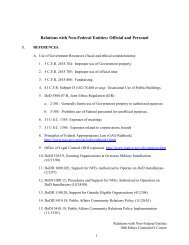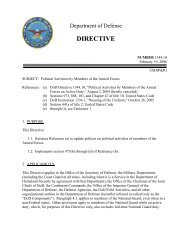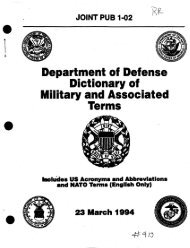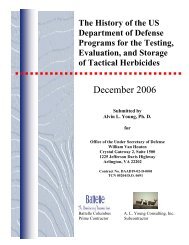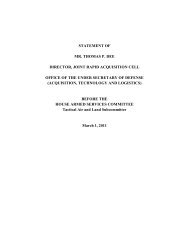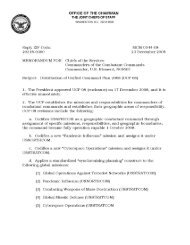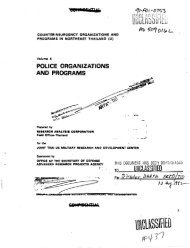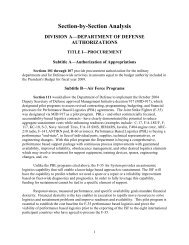Case Number: 11-03267.h1 - United States Department of Defense
Case Number: 11-03267.h1 - United States Department of Defense
Case Number: 11-03267.h1 - United States Department of Defense
- No tags were found...
You also want an ePaper? Increase the reach of your titles
YUMPU automatically turns print PDFs into web optimized ePapers that Google loves.
The allegation at SOR 2.e is not supported by the facts. Nor is it clear thatApplicant was obliged to disclose his 1993 NJP as it occurred approximately sevenyears before he submitted the March 2000. SOR 2.e is resolved for the Applicant.PoliciesA security clearance decision is intended to resolve whether it is clearly5consistent with the national interest for an applicant to either receive or continue tohave access to classified information. Each decision must be a fair, impartial, andcommonsense determination based on examination <strong>of</strong> all available relevant and6material information, and consideration <strong>of</strong> the pertinent criteria and adjudication policiesin the adjudicative guidelines. Decisions must also reflect consideration <strong>of</strong> the factorslisted in 2(a) <strong>of</strong> the new guidelines. Commonly referred to as the “whole-person”concept, those factors are:(1) The nature, extent, and seriousness <strong>of</strong> the conduct; (2) thecircumstances surrounding the conduct, to include knowledgeableparticipation; (3) the frequency and recency <strong>of</strong> the conduct; (4) theindividual's age and maturity at the time <strong>of</strong> the conduct; (5) the extent towhich participation is voluntary; (6) the presence or absence <strong>of</strong>rehabilitation and other permanent behavioral changes; (7) the motivationfor the conduct; (8) the potential for pressure, coercion, exploitation, orduress; and (9) the likelihood <strong>of</strong> continuation or recurrence.The presence or absence <strong>of</strong> a disqualifying or mitigating condition is not, by itself,conclusive. However, specific applicable guidelines should be followed whenever a casecan be measured against them as they represent policy guidance governing the grant ordenial <strong>of</strong> access to classified information. The Government bears the initial burden <strong>of</strong>producing admissible information on which it based the preliminary decision to deny orrevoke a security clearance for an applicant. Additionally, the Government must be ableto prove controverted facts alleged in the SOR. If the Government meets its burden, itthen falls to the applicant to refute, extenuate or mitigate the Government’s case.Because no one has a “right” to a security clearance, an applicant bears a heavy7burden <strong>of</strong> persuasion.A person who has access to classified information enters into a fiduciaryrelationship with the Government based on trust and confidence. Thus, the Governmenthas a compelling interest in ensuring each applicant possesses the requisite judgment,reliability, and trustworthiness <strong>of</strong> one who will protect the national interests as his or herown. The “clearly consistent with the national interest” standard compels resolution <strong>of</strong>5See <strong>Department</strong> <strong>of</strong> the Navy v. Egan, 484 U.S. 518 (1988).67Directive. 6.3.See Egan, 484 U.S. at 528, 531.7



